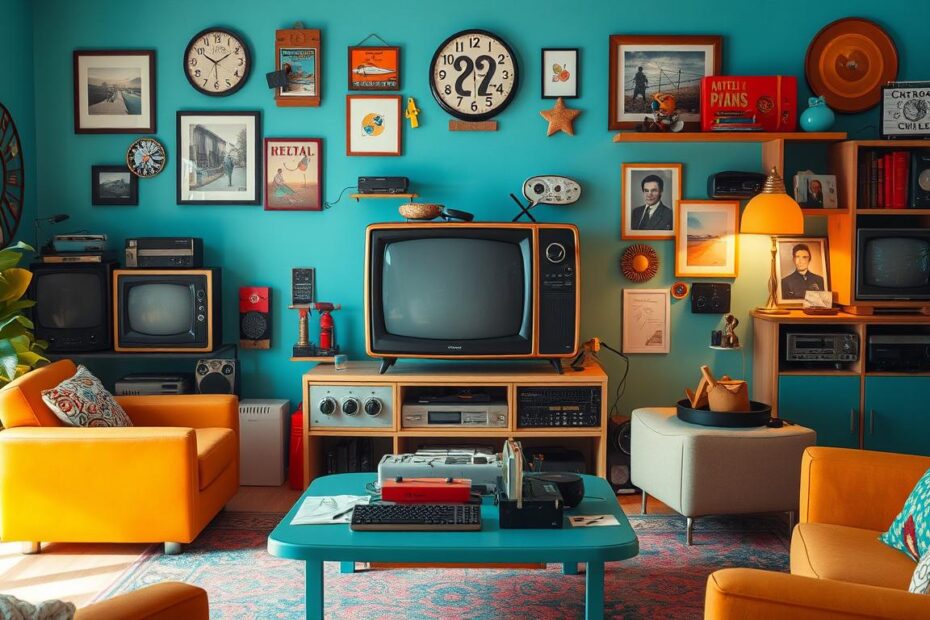In today’s tech-savvy world, it’s easy to overlook the potential of a television that lacks standard features like channels and HDMI ports. You may find yourself asking, ‘What can I do with a TV with no channels and no HDMI port?’ The good news is that there are myriad creative solutions to put your vintage or a channel-less television set to good use. In this article, we will explore alternative connection options, how to leverage any smart features on your non-HDMI TV, and unique ways to repurpose these devices. Whether you’re seeking to create a budget-friendly entertainment system or simply want to give that old TV a new lease on life, we’ve got you covered!
Key Takeaways
- You can use a composite or VGA connection as an alternative to HDMI.
- Streaming devices can enable smart features even on TVs without built-in apps.
- Consider using your TV as a digital photo frame by connecting USB storage.
- Older TVs can still be repurposed for gaming with the right adapters.
- Using a TV as a secondary monitor for a laptop can enhance your workspace.
Exploring Alternative Connection Options
When faced with the challenge of a TV with no channels and no HDMI port, it’s essential to explore alternative connection options that can breathe new life into your viewing experience. One effective method is to utilize composite or component inputs, which may still be available on older models. These connectors allow you to hook up devices such as DVD players, gaming consoles, or streaming devices via AV cables, providing a way to enjoy your favorite shows and movies without relying on traditional TV channels. Additionally, consider incorporating a media player that supports USB connections. By loading media files onto a USB drive, you can access a wide variety of content directly on your TV screen. For those eager to dive into the world of streaming, an older smart device might still have value; connect a Chromecast or similar device using any available AV inputs, enabling you to stream from your mobile device or tablet. Embracing these alternative solutions not only prolongs the life of your TV but also opens up a myriad of entertainment possibilities, proving that even without modern features like HDMI ports or cable channels, your television can still be a versatile piece of technology.
Utilizing Smart Features on Non-HDMI TVs
When faced with the question, ‘What can I do with a TV with no channels and no HDMI port?’, it’s essential to explore various ways to utilize your older television effectively. While lack of HDMI inputs may seem limiting, there are still numerous opportunities to enjoy content. One option is to use analog connection devices, such as DVD players or VCRs, which can provide entertainment through composite outputs (RCA cables). Additionally, consider investing in a digital converter box, which allows you to receive over-the-air signals and gives you the ability to watch local channels. Another viable option is to use external streaming devices that support older TVs, such as those that connect via USB or AV ports, offering access to popular streaming services, thereby transforming your non-HDMI TV into a smart one. This way, you can enjoy a variety of content without the need for modern technologies, making the most out of your television investment.
‘It’s not about having the resources; it’s about being resourceful.’ – Tony Oliveira
Creative Uses for TVs Without Traditional Inputs
If you find yourself pondering, ‘What can I do with a TV with no channels and no HDMI port?’ you’re not alone. Many older models or specialized screens can present an array of innovative opportunities beyond their traditional viewing functions. One creative idea is to transform your TV into a digital photo frame. By using a USB drive loaded with your favorite images, you can showcase your memories in a sliding presentation, turning your living space into a personalized gallery. Additionally, consider employing your TV as a secondary monitor for your computer using a VGA or composite cable, which many older TVs are equipped with; this can help optimize your workspace for better multitasking. Another unconventional use is to make it a dedicated display for a media player or a set-top box that utilizes its own proprietary connections, such as RCA inputs, enabling you to stream content from various sources without the need for HDMI. Lastly, for the DIY enthusiast, these TVs can be disassembled for parts or even refurbished for other uses, like a home automation display or an experimental art project. Embracing these ideas not only helps you maximize your investment but also encourages eco-friendly practices by repurposing technology.


